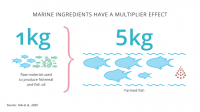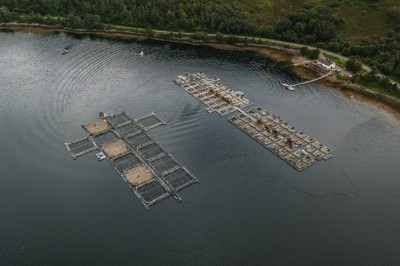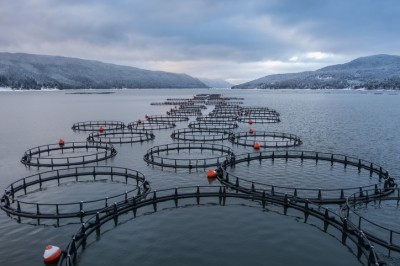IFFO: 6% hike in fishmeal and fish oil production globally in 2021

Peru, Chile and India were the markets reporting a higher cumulative fishmeal production in 2021 with respect to the same period in 2020.
In terms of fish oil though, Iceland also managed to improve its cumulative output, said the marine ingredients organization.
The data also shows that shipments of fishmeal to China continued to rise, with historically high stocks in port warehouses.
In addition, the IFFO reported that updated sustainability metrics show that marine raw materials are being used more as strategic ingredients at key points in aquaculture production cycles.
It said that fish meal and fish oil are being used at key life stages in aquaculture production cycles with a trend towards optimizing their nutritional contributions.
Sustainability metrics
This month also sees the organization reporting on developments in sustainability metrics for marine ingredients.
The FIFO (Fish In: Fish Out) ratio was developed as a way to examine the marine ingredient use during animal production, though most of the focus has been on aquaculture in relation to the use of wild fish in feed to produce farmed fish, it said.
FIFO is often used as simplified environmental benchmark and, although, it remains an important metric, but it has limitations, noted the IFFO.
“These include its application to one sector/ingredient in isolation of a more global contribution, especially the value and quality of the ingredients. FIFO doesn't distinguish between by-products and reduction fishery sources. Replacing fishmeal and fish oil doesn't necessarily imply that those other resources are more sustainable or responsibly sourced.”
Forage fish dependency
The Forage Fish Dependency Ratio (FFDR) is another simple metric for calculating the quantity of wild (forage) fish used in feeds in relation to the quantity of fed animal production.
“FFDR was originally developed as a way of attempting to quantify the environmental impact of feed use in aquaculture systems and there has been a particular attention on FFDR in salmon aquaculture. Like FIFO, the FFDR is expressed as a ratio that considers the amount of marine ingredients in the feed but focuses on those that originate from forage fisheries.
“It is calculated based on taking into account the eFCR, the inclusion level of forage fish-derived marine ingredients in the feed (notably any marine ingredients produced from by-products are not included) and the yield ratio of producing marine ingredients from forage fisheries.”
One of the limitations to the use of FFDR, according to the IFFO, is that it incorrectly assumes that the species used in marine ingredient production would have higher value to society by being used differently, such as through direct human consumption markets, or by environmental benefits through conservation.
“However, if marine ingredients are produced from well-managed fisheries, or from by-products from well managed fisheries, then their use in animal feeds can remain as the best use of that resource. As such, assumptions about the environmental impact of forage fish exploitation are often not valid," said the organization.
Improved resource accountability
Weighing in on the metrics topic, Dr Brett Glencross, IFFO’s technical director, said the industry is now moving from single metrics to a more holistic and comprehensive measurement.
Such new models, he said, are based on the use of lifecycle assessment (LCA) analyses, which aims to give better resource accountability across the value chain and greater cross-sector harmonization of metrics.
In that context, a new metric, economic Fish in: Fish out ratio (eFIFO) has been proposed (Kok et al., 2020).
Such a model would take an economic allocation approach, incorporating the nutritional value of the ingredients and changing balance in values between fishmeal and fish oil over time, said the IFFO.
The eFIFO also recognizes the economic contribution of by-products relative to the economic contribution of the direct human consumption, commented the industry body.
Economic allocation acts as a proxy for the nutritional value of the ingredients and places greater importance on the ingredients with a more limited availability and their relative demand, it added.
“In the case of eFIFO we observe that with the changing balance in values between fishmeal and fish oil over time, we are better able to represent that sustainability burden. The ratio also allows us to recognize the economic contribution of by-products relative to the economic contribution of the direct human consumption component," commented the IFFO.









